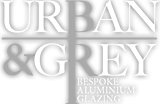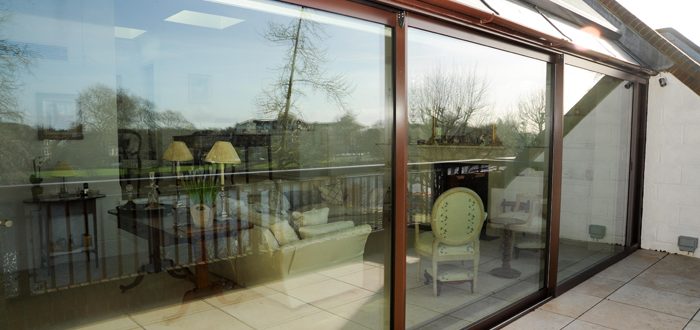By now you’ve probably felt the change in the air as autumn begins to fade and winter moves in. The annual cold snap can be a nightmare for homeowners trying to keep warm, which isn’t surprising given that a typical household can lose up to 10% of its generated heat through window panes and glazed door units.
What causes that valuable heat to escape when we most need it? What can we, as homeowners, do about it? Follow this short guide for more information on heat loss, heat gain, and how the right choice of aluminium windows and doors can transform your chilly interior into a comfortable living space, no matter the season.
Explaining heat loss in windows
The biggest cause of heat loss is radiation. It accountsfor around two thirds of all energy lost through windows. This is because glass is an exceptional conductor of heat. Warmth generated within the house is absorbed by the window’s inner pane. It is then transmitted to the outer pane’s cooler surface and eventually to the outside, where it is lost irretrievably.
Convection can be another factor causing heat loss in windows that have a cavity between the glazing unit’s two panes. Sometimes the warmth of the inner pane generates heat within the glazing cavity – hot air which eventually rises and is replaced with colder air. This cold air creates a convection current which continually contributes to the transfer of heat from the inside to the outside.
After radiation, the second biggest cause of heat loss from interiors comes from air leakage. However, this is an issue which primarily affects older units and those which are particularly badly fitted, allowing heat to escape through sometimes unnoticeable gaps in material.
Practically all glazed units on the market nowadays are rated with U-values, describing their overall level of thermal transmittance. This U-value is measured in watts per metre per degree of temperature difference, but all you need to know is this: the lower the U-value of the glazing, the better thermal performance you can expect.
Our selection of aluminium windows are manufactured especially for their thermal insulation properties, whether you choose Supertherm80 or Thermo60 as your preference. They offer insulated gas-filled cavities as standard, in addition to air-tight thermal breaks in the frames, providing unrivalled U-values without any compromise on design or security.
What about passive solar heat gain?
Remember how glass and glazing, in particular, is an excellent conductor of heat? Well, heat absorption works both ways – radiation doesn’t transfer simply from warm interiors to outdoors in all cases.
On warmer days it can just as easily be the outer pane of your glazed unit which absorbs heat from outside before transmitting it to the inside, resulting in a net heat gain within the home. Untreated glass will also pass solar heat, in the form of UV rays, directly through the panes.
There are a few key factors to be aware of regarding heat gain. Whether heat gain is something you want to encourage or discourage, however, will depend largely on the specific location and design of your house.
Direction
The way which your windows are facing can be a big influence on the levels of household heat gain you can expect to see throughout the day, as well as throughout the year. During the summer months south-facing windows and doors will be subjected to the most heat, while east-facing and west-facing windows will see peak absorption during the mornings and the afternoons respectively.
Shade
Providing some level of natural shade can make all the difference if you’re trying to prevent too much heat gain in the summer. Planting bushes and trees in the right place can straightforwardly provide shading and prevent the sun’s rays from penetrating your windows. However, the low angle of the sun by east- and west-facing windows can make these locations trickier to insure against increased heat gain.
G-values
Alongside U-values, a window’s G-value is another measure of its energy efficiency – specifically regarding the degree to which it prevents heat from sunlight entering a property. Values range in fractions from zero to one, with lower G-values representing the greater capability for solar heat prevention. The G-value of a window can be reduced further by using low-emissivity or solar control glazing specifically designed to reflect unwanted UV rays.
Energy efficient windows and doors from Urban & Grey
With years of experience specifying and fitting countless projects across London and the Home Counties, we are ready and able to ensure you get the right energy efficient windows and doors for your household or workplace. Every product in our range was manufactured or selected with modern thermal performance standards in mind, so the properties we work on aren’t just a pleasure to behold, but a pleasure to live in as well.
Feel free to browse our product range or selection of project galleries. If you have any questions or would like to discuss the specifics of your bespoke project, don’t hesitate to contact us today.

